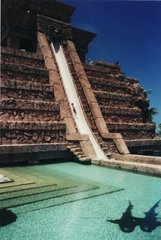
Arbroath or Aberbrothock (Scottish Gaelic: Obair Bhrothaig which translates literally as 'at the mouth of the Brothock') is a former royal burgh and the largest town in the council area of Angus in Scotland, and has a population of 22,785. It lies on the North Sea coast, around 17miles (27.4 km) north-east of Dundee and 51 miles (82.1 km) south of Aberdeen.
Its history begins, like nearby Dundee, with the Picts in the Iron Age, and remained a small village until 1178 AD, when King William the Lion founded an abbey, which was completed in 1233.

During the medieval period, the Abbey fell into disuse and eventually disrepair, with the lead from the roof rumoured to have been used in the manufacture of bullets for the civil wars during the reign of King James VI.
During the Industrial Revolution the jute industry caused Arbroath to expand in the manner of Dundee. A new harbour was built in 1839 and by the 1900s, Arbroath had become one of the larger fishing ports in Scotland and continues to be known as the home of the Arboath Smokie.
The town is notable as the home of the Declaration of Arbroath, the statement of Scottish independence signed by the nobility in the 14th century.

The town's ancient ruined abbey is central to the story of the declaration and remains a key tourist attraction for Scotland. Arbroath was the birthplace of postal reformist James Chalmers and David Dunbar Buick, founder of Buick and inventor of the overhead valve engine. Arbroath is also well known both at home and overseas as home to 45 Commando of the Royal Marines.
























No comments:
Post a Comment